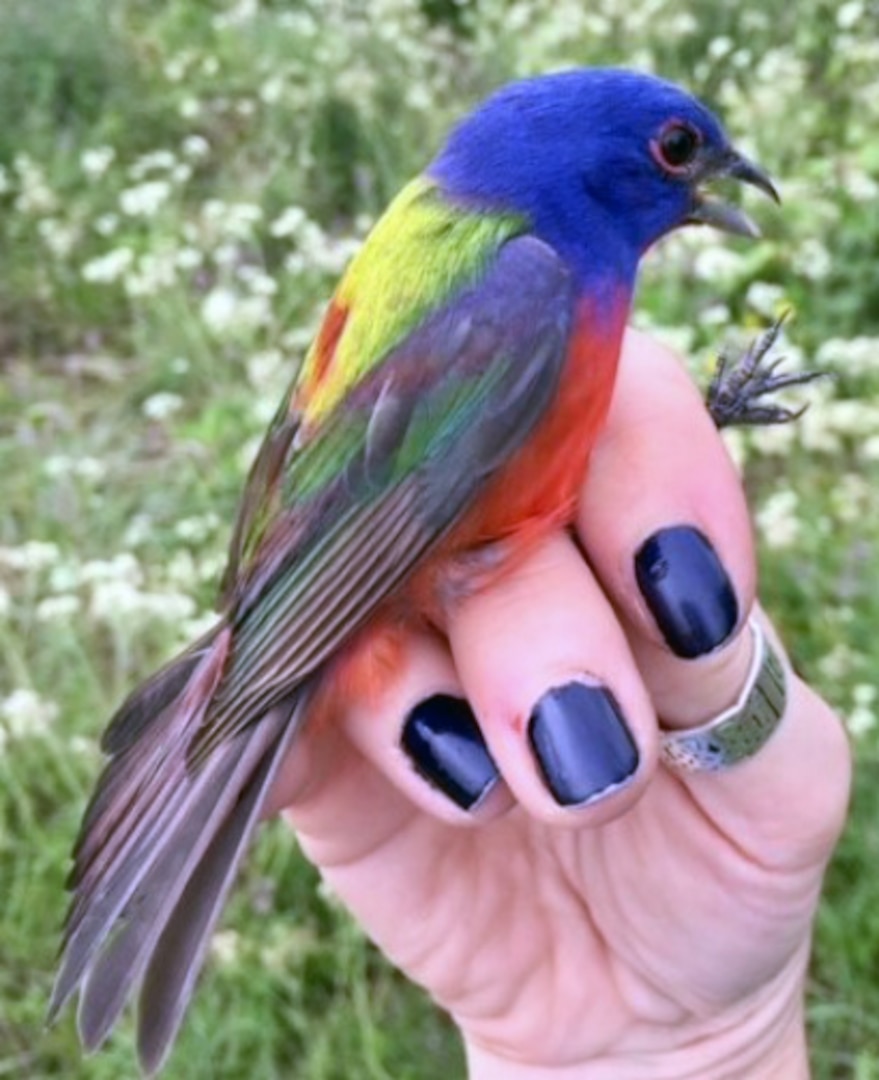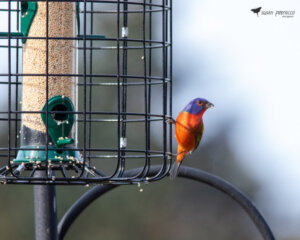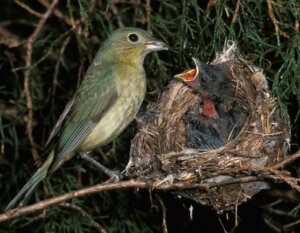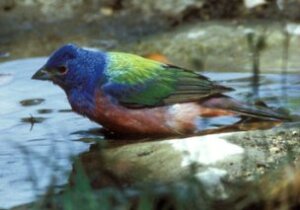Is the Painted Bunting Endangered? Discover the Truth
No, the Painted Bunting is not currently endangered. But its population faces threats.
The Painted Bunting is one of the most colorful birds in North America. Its vibrant plumage makes it a favorite among bird watchers. Yet, this bird’s beauty does not protect it from danger. Habitat loss and illegal trapping are significant threats.
These factors put pressure on their numbers. This blog explores the challenges Painted Buntings face. We will discuss their habitat, risks, and conservation efforts. Let’s dive into the world of the Painted Bunting and learn more about its status.
Introduction To The Painted Bunting
The Painted Bunting is one of the most beautiful birds in North America. Its vibrant colors and unique patterns make it a favorite among bird watchers. Many wonder if this stunning bird is at risk of extinction. Let’s explore the world of the Painted Bunting to learn more about its status.
What Is The Painted Bunting?
The Painted Bunting is a small bird found mainly in the southern United States. It belongs to the cardinal family. This bird is known for its bright and colorful feathers. It is often called a “nonpareil,” which means “unrivaled.” This name reflects its unmatched beauty. Painted Buntings prefer to live in thickets, woodland edges, and brushy areas.
Physical Characteristics
Male Painted Buntings have striking plumage. Their heads are a deep blue. Their backs are green. Their bellies are bright red. This colorful mix makes them easy to spot. Females and young birds look different. They have greenish-yellow feathers. This helps them blend into their surroundings. The average size of a Painted Bunting is around five inches in length. They weigh about half an ounce, making them small but noticeable.

Credit: www.jbsa.mil
Habitat And Distribution
The Painted Bunting, known for its vibrant colors, is a small songbird. Understanding its habitat and distribution is crucial to its conservation. Let’s dive into where these beautiful birds live and roam.
Natural Habitat
Painted Buntings prefer a variety of habitats. They thrive in dense, shrubby areas. These birds also like woodland edges and brushy fields. In the breeding season, they seek out habitats with thick vegetation. This provides both food and protection from predators.
During migration, they use coastal habitats. They also utilize thickets and weedy fields. In their wintering grounds, they choose habitats like scrub and mangroves. These areas offer abundant food and cover.
Geographical Range
The geographical range of Painted Buntings is diverse. They breed primarily in the southeastern United States. States include Texas, Oklahoma, Arkansas, and Florida. Some populations also breed in Mexico.
During migration, they travel to Central America. Countries such as Mexico, Belize, and Costa Rica see these birds. Their wintering grounds extend to the Caribbean and parts of Central America. This range ensures they find suitable habitats throughout the year.
| Region | Season | Habitat Type |
|---|---|---|
| Southeastern United States | Breeding | Woodland edges, brushy fields |
| Central America | Migration | Coastal habitats, thickets |
| Caribbean and Central America | Wintering | Scrub, mangroves |
Behavior And Diet
Painted buntings are known for their vibrant plumage and unique behaviors. Understanding their behavior and diet helps us appreciate these colorful birds. They have specific feeding habits and distinct mating and nesting patterns.
Feeding Habits
Painted buntings primarily eat seeds. They favor grass seeds and weed seeds. During the breeding season, their diet expands. They consume more insects. This includes caterpillars, grasshoppers, and beetles. Insects provide vital protein for their growing chicks. Painted buntings forage on the ground. They also search for food in low shrubs. These birds are opportunistic feeders.
Mating And Nesting
Painted buntings have unique mating behaviors. Males arrive at breeding grounds first. They establish territories and start singing. Their songs attract females. Males are very territorial. They often engage in fights with other males.
Females build the nests. They choose hidden locations. Nests are usually in low trees or shrubs. The nests are cup-shaped. They are made of grasses and plant materials. Females lay three to four eggs. They incubate the eggs for about 12 days. After hatching, both parents feed the chicks. Chicks fledge after 12-14 days.
Threats To The Painted Bunting
The Painted Bunting, a vibrant and colorful bird, faces several threats. These threats impact their survival and population numbers. Understanding these threats is crucial for their conservation.
Habitat Loss
Habitat loss is a significant threat to Painted Buntings. Urban development destroys their natural habitats. Forests and grasslands are converted into buildings and roads. This leaves the buntings with fewer places to live and breed. Agriculture also plays a role. Farmers clear land for crops, reducing the birds’ habitats. As their habitats shrink, Painted Buntings struggle to find food and shelter.
Climate Change
Climate change affects Painted Buntings in various ways. Rising temperatures alter their habitats. Some areas become too hot or too dry. This forces the birds to move to new areas. But not all birds can adapt quickly. Changes in weather patterns also impact food availability. Insects and plants they rely on may not thrive in changing climates. This makes it harder for Painted Buntings to find enough food.
Conservation Efforts
The Painted Bunting is a beautiful bird with vibrant colors. Sadly, it is facing threats. To protect this species, several conservation efforts are underway. These efforts focus on protecting habitats and involving the community.
Protection Programs
Various protection programs aim to safeguard the Painted Bunting’s habitat. These programs include:
- Establishing protected areas
- Monitoring bird populations
- Restoring natural habitats
Protected areas provide safe environments for these birds. Monitoring helps track their numbers and health. Restoring habitats ensures they have places to live and breed.
Community Involvement
Community involvement is crucial for the success of conservation efforts. People can help in various ways:
- Participating in bird counts
- Supporting local conservation groups
- Creating bird-friendly yards
Bird counts provide valuable data on Painted Bunting populations. Local groups work on specific conservation projects. Bird-friendly yards offer safe spaces for these birds to thrive.
By working together, we can help protect the Painted Bunting for future generations.

Credit: abcbirds.org
Future Outlook
The future of the Painted Bunting is a topic of great interest. This vibrant bird faces many challenges. Conservationists work hard to ensure its survival. Let’s explore the current population trends and their long-term survival.
Current Population Trends
The Painted Bunting’s population has seen fluctuations over the years. According to recent studies, there are around 4.5 million individuals left. Despite the large number, their habitats are shrinking. Urbanization and deforestation are the main causes. The birds are also affected by climate change.
Here is a table showing the population trends over the past decade:
| Year | Estimated Population |
|---|---|
| 2013 | 5.0 million |
| 2015 | 4.8 million |
| 2017 | 4.6 million |
| 2019 | 4.5 million |
| 2021 | 4.5 million |
Long-term Survival
The long-term survival of the Painted Bunting depends on several factors. Conservation efforts play a key role. Protecting their habitats is crucial. Efforts to reduce deforestation and urbanization are needed.
Here are some steps that can help:
- Creating protected areas for the birds.
- Promoting awareness about their plight.
- Encouraging sustainable agricultural practices.
By taking these measures, we can improve their chances of survival. The Painted Bunting’s bright colors and beautiful song deserve to be preserved for future generations.

Credit: www.wusf.org
Frequently Asked Questions
What Is The Painted Bunting?
The Painted Bunting is a small, brightly colored songbird. Males have vibrant plumage, while females are green.
Where Can You Find Painted Buntings?
Painted Buntings are commonly found in the southeastern United States. They prefer habitats like forests and shrublands.
Are Painted Buntings Endangered?
Painted Buntings are not currently endangered. However, their population is threatened by habitat loss and illegal trapping.
What Do Painted Buntings Eat?
Painted Buntings primarily eat seeds and insects. Their diet helps them maintain their vivid colors.
Conclusion
The Painted Bunting faces threats but isn’t yet endangered. Protecting their habitat is crucial. Every small action helps their survival. Support conservation efforts to ensure their future. Spread awareness about the Painted Bunting’s situation. Together, we can make a difference.
Enjoy watching these beautiful birds responsibly. Appreciate nature and its wonders.
Hello Dear, I'm Poli Kolymnia, owner of many birds (including budgies).
With a deep passion for these feathered companions, I'm here to share my expertise and extensive knowledge on birds care.
My articles cover essential topics like diet, housing, care, and health, providing practical tips to help you create a happy and thriving environment for your birds.




